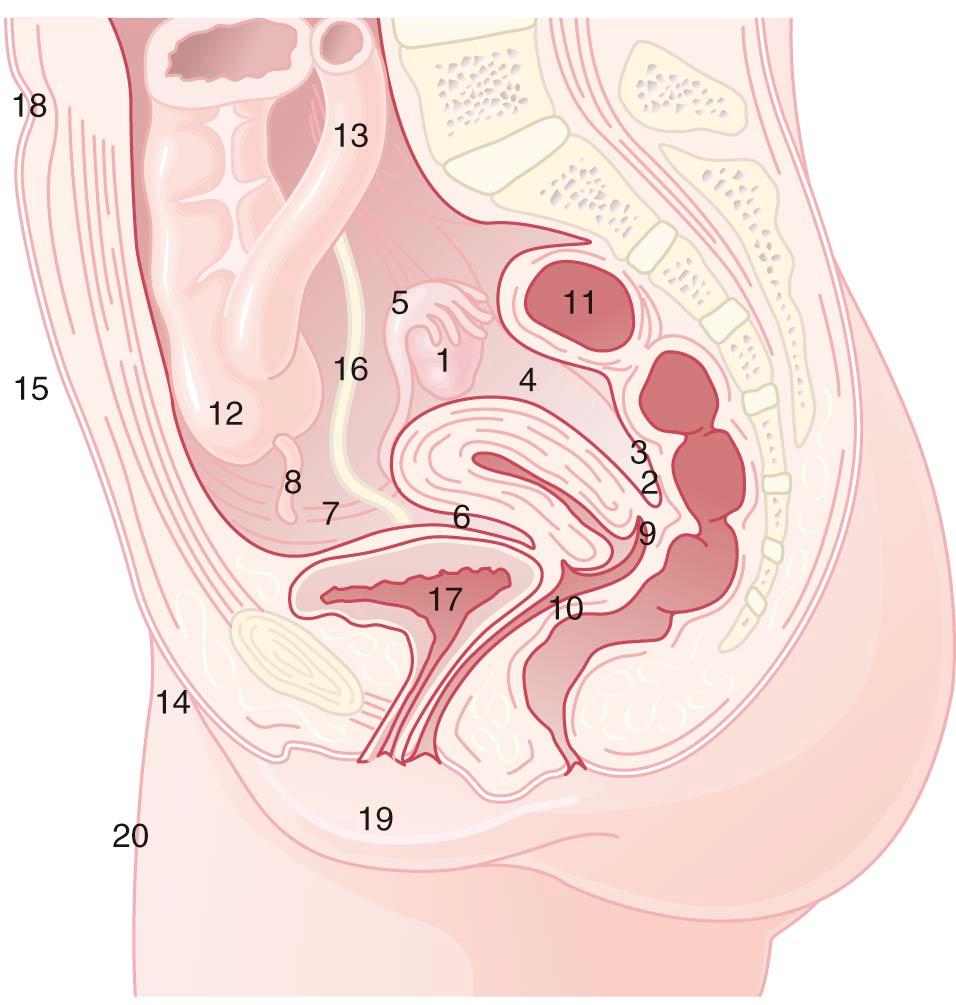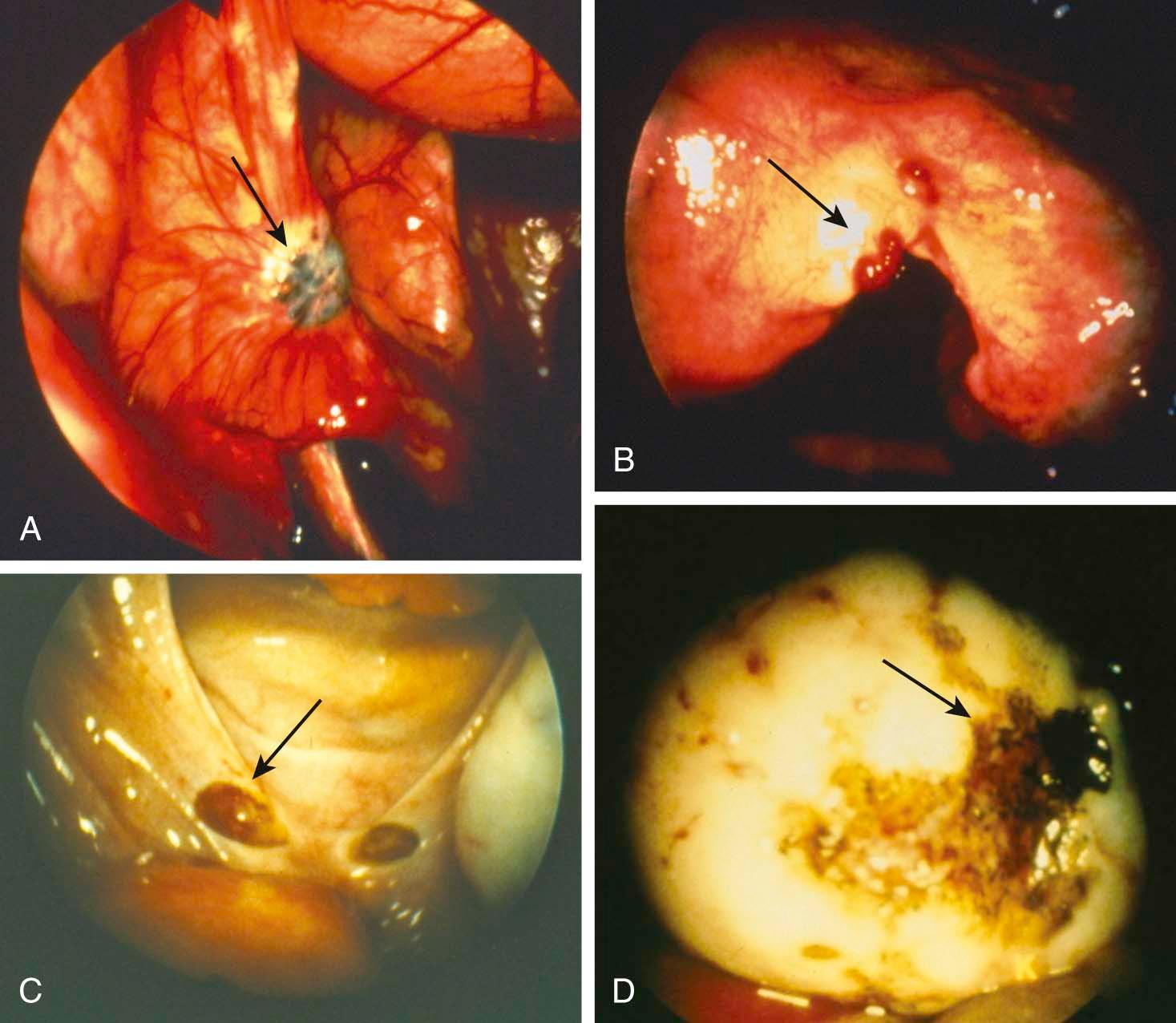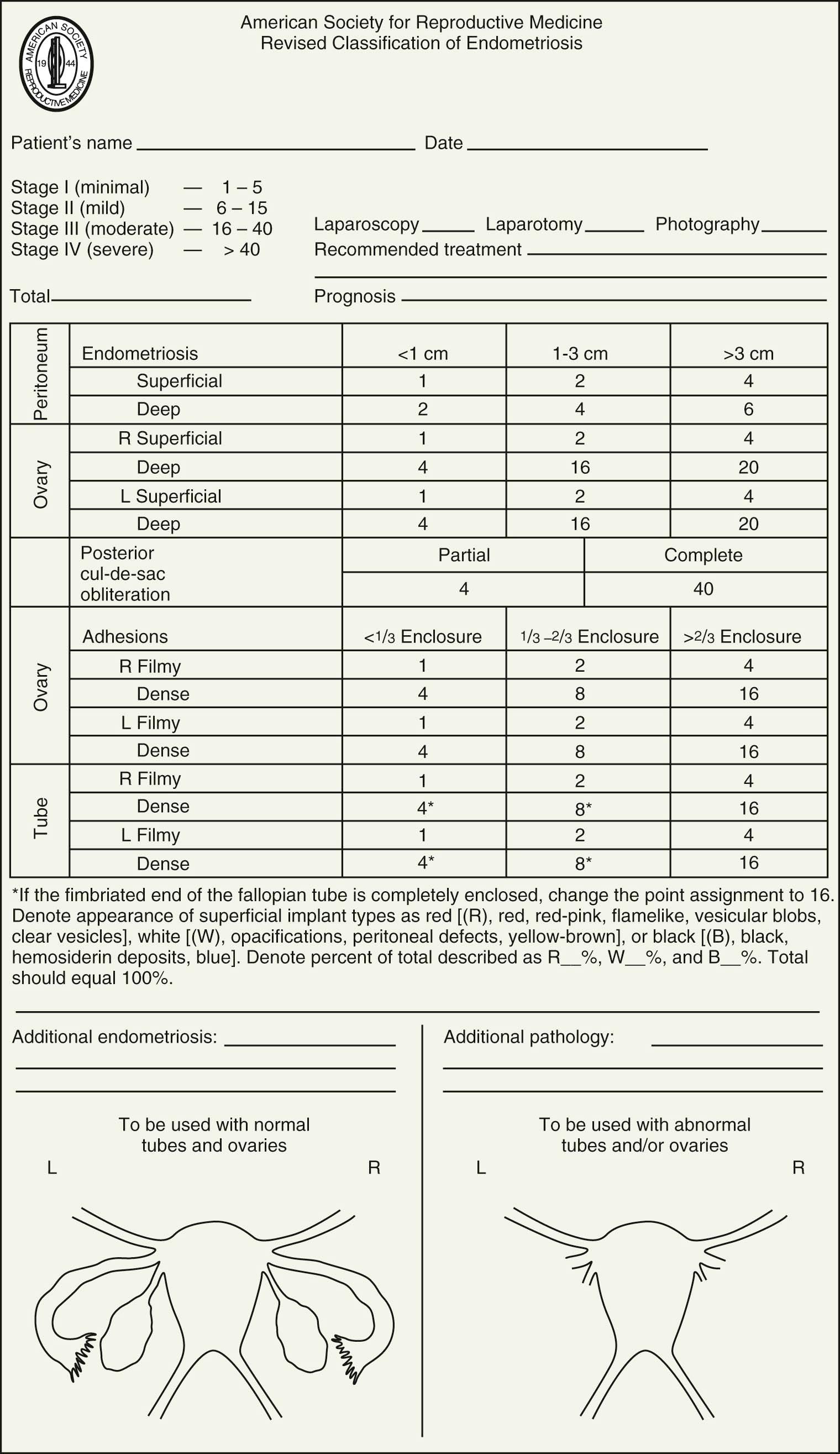Physical Address
304 North Cardinal St.
Dorchester Center, MA 02124
Endometriosis is defined as the presence of endometrial glands and stroma in extrauterine locations. An accurate prevalence for endometriosis is not known, but it is estimated that about 10% of women of reproductive age have the disease. Most women are without symptoms, but some have severe pain often manifested by dysmenorrhea, dyspareunia, and, less often, dyschezia. Infertility is often the initial sign of endometriosis.
Retrograde menstruation, metaplastic transformation of peritoneal mesothelium, and lymphatic spread are the three most often cited hypotheses for the origins and locations of endometriosis. An immunologic factor is presumed to explain why some women who have risk factors similar to those that are affected do not develop the disease. Genetic predisposition is highly likely, based on polygenetic, multifactorial inheritance.
The staging of endometriosis is based upon the location, extent, and appearance of the lesions. Implants of glands and stroma may be dark red, brown, bluish gray, or even white. The lesions are frequently surrounded by fibrosis, which results in puckering. Ovarian cysts filled with hemosiderin-laden, “chocolate”-colored fluid may form metaplastic endometriomas.
The amount of endometriosis does not always correlate with the severity of symptoms. Women with minimal or no symptoms may be managed expectantly. Medical treatments consist of initial trials of nonsteroidal antiinflammatory drugs (NSAIDs) and low-dose progestins, including oral contraceptives (OCs). More advanced medical therapy includes the androgenic danazol and gonadotropin-releasing hormone (GnRH) analogues. When fertility is desired but is not occurring spontaneously and medical therapy has failed, conservative laparoscopic surgery to reduce the amount of endometriosis and reactive adhesions is indicated. More definitive extirpative surgery involves removal of all endometriosis and adhesions, along with the uterus and adnexal tissues. One or both ovaries may be preserved if they are completely free of endometriosis.
Adenomyosis is the extension of endometrial glands and stroma into the uterine musculature more than 2.5 mm beneath the basalis layer. The uterus is homogeneously enlarged. Although many women with adenomyosis are without symptoms, some have severe dysmenorrhea, and the disorder may adversely affect fertility. Medical therapy with NSAIDs is indicated initially for the pain and uterine bleeding. Endometrial ablation may be performed for heavy bleeding, and hysterectomy is sometimes indicated when more conservative treatment has failed.
It is estimated that 5-15% of women of reproductive age have some degree of endometriosis, defined as the presence of endometrial glands and stroma in extrauterine locations. Both endometriosis and adenomyosis (growth of endometrial glands and stroma into the uterine muscle) are associated with pelvic pain and infertility. Endometriosis and adenomyosis often present difficult diagnostic and therapeutic challenges. In the case of endometriosis, few gynecologic conditions can require such difficult surgical dissections.
Endometriosis is a benign condition in which endometrial glands and stroma are present outside the uterine cavity and walls. Endometriosis is important in gynecology because of its frequency, distressing symptomatology, association with infertility, and potential for invasion of adjacent organ systems, such as the gastrointestinal and urinary tracts.
The prevalence of endometriosis in the general population is not known, but it is estimated that 5-15% of women have some degree of the disease. At least one-third of women with chronic pelvic pain have visible endometriosis, as do a significant number of infertile women. Interestingly, endometriosis is noted in 5-15% of women undergoing gynecologic laparotomies, and it is an unexpected finding in approximately half of these cases.
The typical patient with endometriosis is in her 30s, nulliparous, and infertile. However, in practice, many women with endometriosis do not fit the classic picture. Occasionally, endometriosis may occur in infancy, childhood, or adolescence, but at these early ages, it is usually associated with obstructive genital anomalies such as a uterine or vaginal septum. Although endometriosis should regress following menopause unless estrogens are prescribed, 5% of new cases develop in that age group. In addition, the scarifying involution from preexisting lesions may result in obstructive problems, especially in the gastrointestinal and urinary tracts.
The pathogenesis of endometriosis is not completely understood. Genetic predisposition clearly plays a role. The following three hypotheses have been used to explain the various manifestations of endometriosis and the different locations in which endometriotic implants may be found:
The retrograde menstruation theory of Sampson proposes that endometrial fragments transported through the fallopian tubes at the time of menstruation implant and grow in various intraabdominal sites. Endometrial tissue, which is normally shed at the time of menstruation, is viable and capable of growth in vivo or in vitro. To explain some rare examples of endometriosis in distant sites, such as the lung, forehead, or axilla, it is necessary to postulate hematogenous spread.
The müllerian metaplasia theory of Meyer proposes that endometriosis results from the metaplastic transformation of peritoneal mesothelium into endometrium under the influence of certain generally unidentified stimuli.
The lymphatic spread theory of Halban suggests that endometrial tissues are taken up into the lymphatics draining the uterus and are transported to the various pelvic sites where the tissue grows ectopically. Endometrial tissue has been found in pelvic lymphatics in up to 20% of patients with the disease.
Most authorities believe that several factors are involved in the initiation and spread of endometriosis, including retrograde menstruation, coelomic metaplasia, immunologic changes, and genetic predisposition. A fundamental question is why all menstruating women do not develop endometriosis, given that most, if not all, women have retrograde flow into the pelvic peritoneum during menstruation. The amount of exposure to retrograde flow and the woman's immunologic response seem to be critical. Researchers have identified differences in the chemical composition and biologic pathways of endometrial cells from women with endometriosis compared with those of unaffected women. They have also found significant differences in the inflammatory and growth factors in the peritoneal fluid of affected women. A clearer understanding of the pathophysiology of endometriosis would provide insights into more effective strategies for prevention and treatment.
Endometriosis occurs most commonly in the dependent portions of the pelvis. Specifically, implants can be found on the ovaries, the broad ligament, the peritoneal surfaces of the cul-de-sac (including the uterosacral ligaments and posterior cervix), and the rectovaginal septum ( Figure 25-1 ). Quite frequently, the rectosigmoid colon is involved, as is the appendix and the vesicouterine fold of peritoneum. Endometriosis is occasionally seen in laparotomy scars, developing especially after a cesarean delivery or myomectomy in which the endometrial cavity has been entered. It is probable that endometrial tissue is seeded into the surgical incision. Two of three women with endometriosis have ovarian involvement.

Islands of endometriosis respond cyclically to ovarian steroidal hormone production. The implants proliferate under estrogenic stimulation and slough when support from estrogen and progesterone is removed with involution of the corpus luteum. The sloughed material induces a profound inflammatory response, resulting in pain immediately and fibrosis in the longer term. The macroscopic appearance of endometriosis depends on the site of the implant, the activity of the lesion, the day of the menstrual cycle, and the time since implantation.
Lesions may be raised and flat with red, black, or brown coloration; fibrotic, scarred areas that are yellow or white in hue; or vesicles that are pink, clear, or red ( Figure 25-2 ). The color of the implant is generally determined by its vascularity, the size of the lesion, and the amount of residual sloughed material. Newer implants tend to be red, blood-filled, active lesions. Older lesions tend to be much less active hormonally, scarred, and bluish gray in color, with a puckered appearance. These older, inactive lesions have been called the tattooing of endometriosis.

Endometriomas of the ovary are cysts filled with thick, chocolate-colored fluid that sometimes has the black color and tarry consistency of crankcase oil. This characteristic fluid represents aged, hemolyzed blood and desquamated endometrium. Usually, endometrial glands and stroma are present in the cyst wall. Sometimes, however, the pressure of the enclosed fluid destroys the endometrial lining of the endometrioma, leaving only a fibrotic cyst wall infiltrated with large numbers of hemosiderin-laden macrophages. Generally, ovarian implants are associated with significant scarring of the ovary to the pelvic sidewall or broad ligament. Histologically, two of four characteristics must be found in the endometrioma specimen to confirm the diagnosis: endometrial epithelium, endometrial glands, endometrial stroma, and hemosiderin-laden macrophages.
Although endometriosis is a benign process, it shares many characteristics with malignancy. It is locally infiltrative, invasive, and widely disseminated. It is also curious that cyclic hormones tend to induce growth, whereas continuous hormonal exposure, especially in high doses, generally induces significant regression.
The American Society of Reproductive Medicine employs a staging protocol in an attempt to correlate fertility potential with a quantified stage of endometriosis. This staging, which was initially based on the allocation of points depending on the sites involved and the extent of visualized disease ( Figure 25-3 ), was modified to include a description of the color of the lesions and the percentage of surface involved in each lesion type, as well as a more detailed description of any endometrioma. The lower portion of Figure 25-3 provides sketches of normal and abnormal uterine and adnexal anatomy where mapping of implants of endometriosis and adhesions can be documented for accurate staging.

Become a Clinical Tree membership for Full access and enjoy Unlimited articles
If you are a member. Log in here